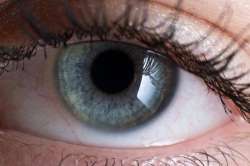New Google AI algorithm to predict future heart attack from retina scan
Google AI scans retinas to work out your blood pressure, age and smoking habits and predict the major risk of heart diseases.

Google has come up with a way to make your eyes a perfect window to your heart. A new Google-created artificial intelligence software can use to calculate your risk factors for heart disease.
According to a study recently published in the Nature Biomedical Engineering journal, an AI algorithm created by Google AI and Verily Life Sciences can predict whether a patient is likely to suffer a major cardiovascular event like a heart attack or stroke within five years, based on a photo of their retina.
So far, the predictions work about as well as presently accepted methods that are more invasive, according to the study.
The fact that disease can be spotted in the retina isn't a surprise. Doctors often spot medical conditions including diabetes, extreme high blood pressure, high cholesterol, and some cancers during eye exams, a report in World Economic Forum website said.
To mimic that ability, the Verily and Google researchers trained AI software to identify cardiovascular risks by having the system analyze retina photos and health data from 284,335 patients, it said.
Known risk factors for cardiovascular disease include age, blood pressure, and gender, among other things. Based on an eye scan, the algorithm was able to predict a person's age to within 3.26 years, smoking status with 71% accuracy, and blood pressure within 11 units of the upper number reported in their measurement.
Because the algorithm was so effective at assessing these factors, the researchers decided to see how well it could predict actual strokes and heart attacks.
By comparison, the European SCORE risk calculator, which requires a blood test, is currently used to predict risk for cardiovascular disease. That calculator predicted the correct scan in 72% of the cases from the same dataset, which is not much better than the AI performance — and the AI did just as well when it had access to demographic information like age, gender, and BMI.